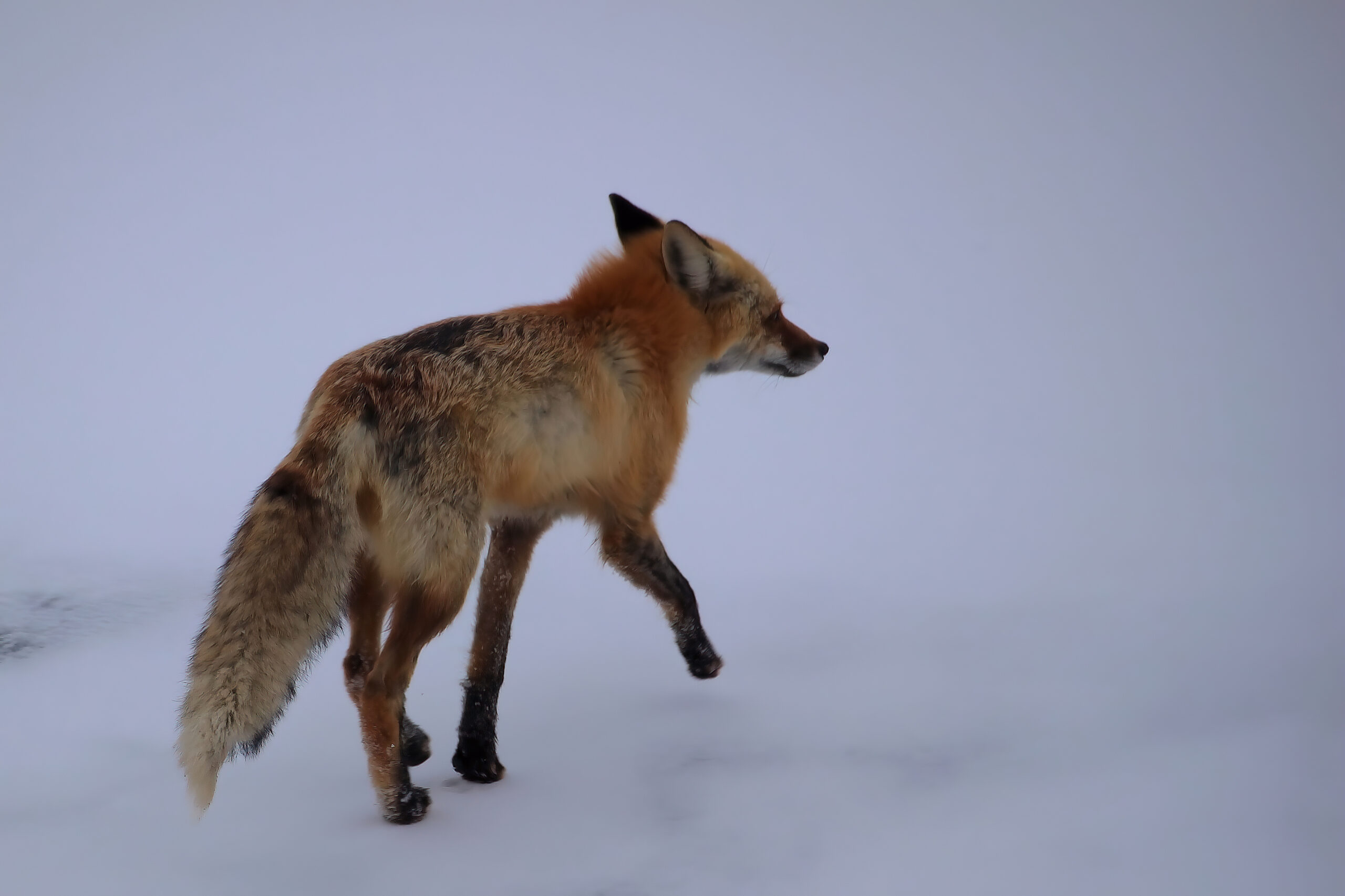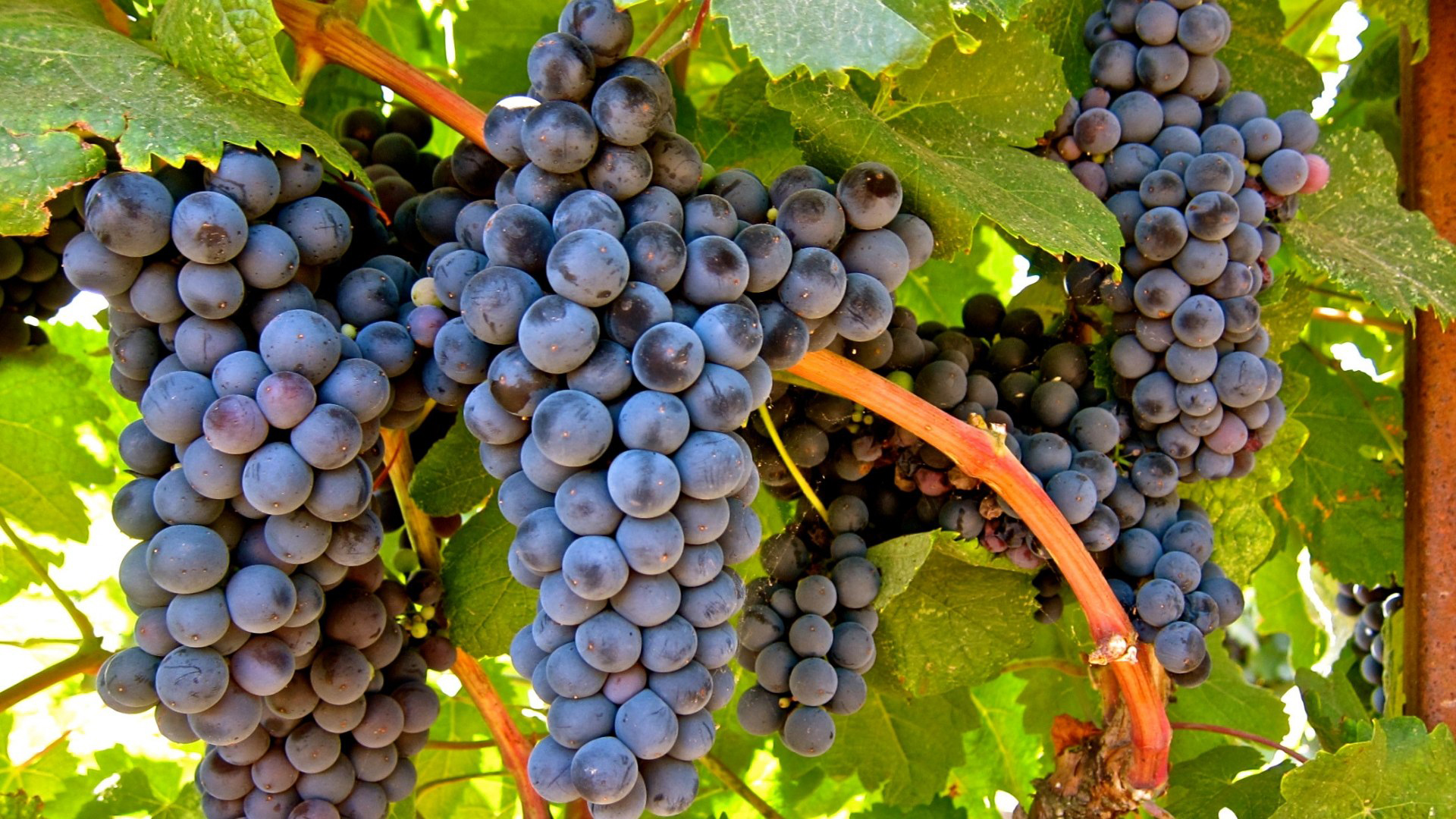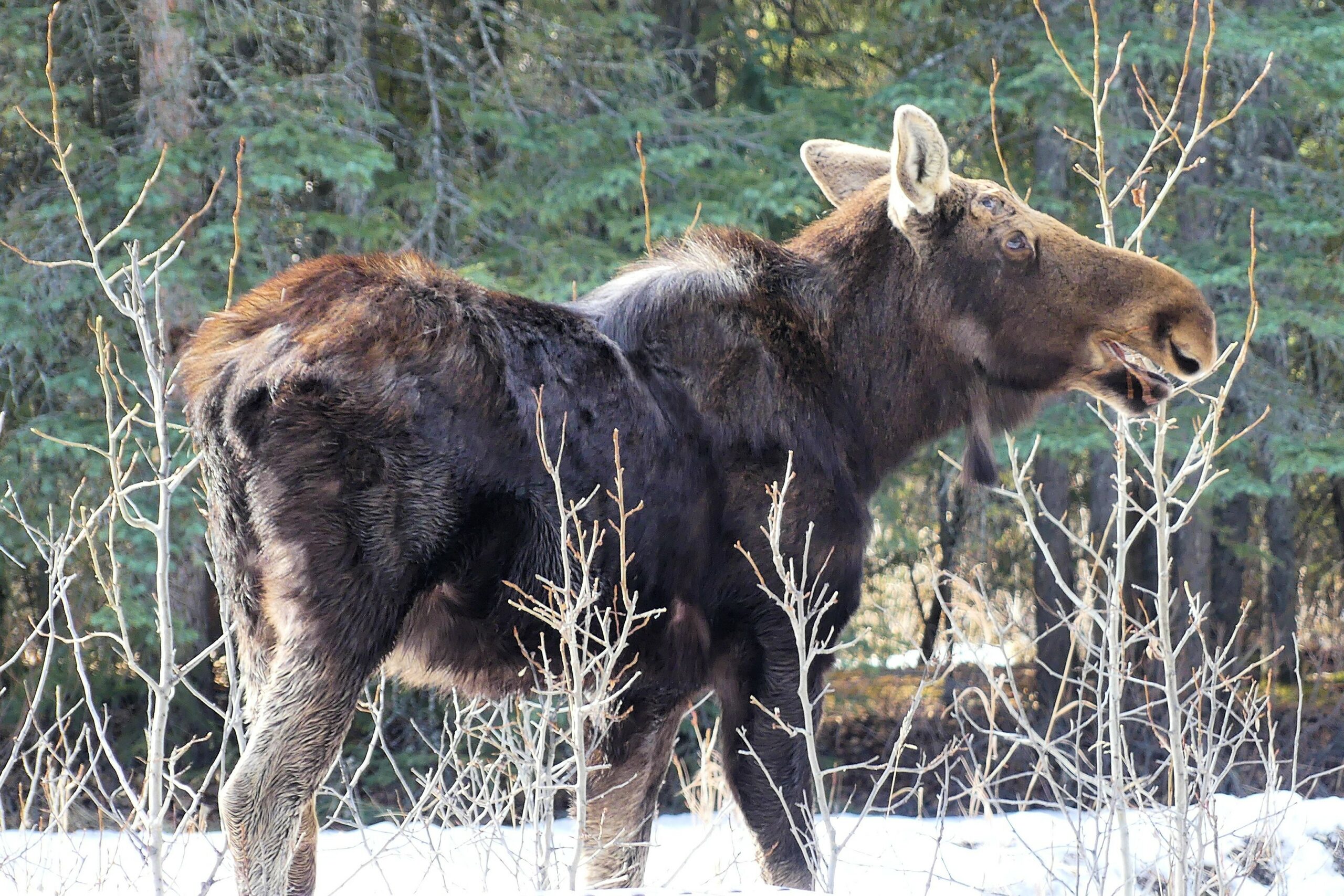As April begins, the heart beats more quickly in each and every bird watcher. Chiropractors know business will increase with all of those upward looking twitchers, sky scanning for spring arrivals. There are times though the best of opportunities are no higher than eye level. This past week, a combination of Lake Chestermere sightings, that of a predatory songbird and the most intelligent vulpes vulpes, added to the joy of being outdoors.
Seen on its migratory path to the Arctic, the Northern Shrike is an impressive looking songbird. Sporting a black mask and having a stout, hooked bill, this burly bird enjoys the dead, low “shrubs”, dotting the west shore of the northern side of Lake Chestermere. The vantage points provided by these knotty perches near the wooden bridge and up near “Dog Beach” are choice scouting locations for the shrike. Gifted with tooth like spikes on either side of the upper bill and corresponding notches on the lower mandible, these “tomial” teeth enable the shrike to kill prey with a quick bite to the neck. Woe to the sparrows, mice and voles the shrike pursues. Northern Shrikes will skulk through the dense grasses and bullrushes and bush, watching mouse holes and mouse pathways, waiting for a quick kill Known for killing more than it needs immediately, the shrike will store the extra meal by impaling the corpse on spines or barbed wire, earning its nickname. In watching a shrike up near “Dog Beach” a few days ago, I learned something new about this songbird. Over the course of a few seconds, the shrike opened its bill. Slowly but surely a dark looking object was ejected from from its bill. Amazed, I truly was! The shrike cannot digest all parts of the mice, voles and birds it eats. Every now and then, a pellet of the indigestible material returns to the earth!
Twice this past week, I’ve been fortunate enough to see vulpes vulpes, the red fox. While walking the paved trail in The Cove, the fox made its first appearance heading up Cove Road. Sadly with no camera in hand and a mere fifteen feet away, all I could do was appreciate its presence. Armed with a camera the next day, and walking across the 17th Avenue bridge, my furry friend crossed the avenue by going beneath the bridge and then appeared on the lake ice on the south side. Sniffing and foraging as it headed west, then stopping for a drink of water from a puddle, the fox crossed West Chestermere Drive, checking out the base of the bushes as it proceeded to the golf course.
Sharing a diet similar to the shrike, mice, voles, wildfowl, bird eggs and birds too, comprise much of a red fox dinner plate. Adapting easily to “city living” the fox is predominantly a nocturnal creature. However, with young to feed, the fox will move about during the day, looking for sustenance to raise the family.
It’s spring. It’s April. Our world reveals new energy as migrating birds and nature’s Red Fox, continue to ensure the next generation has an opportunity to continue into the future. It’s a world and time where we can truly appreciate the presence of those with whom we share the planet.
THE “BUTCHER BIRD” & THE FOX

In response to Canada's Online News Act and Meta (Facebook and Instagram) removing access to Canada's local news from their platforms, Anchor Media Inc encourages you to get your news directly from your trusted source by bookmarking this site and downloading the Rogue Radio App. Send your news tips, story ideas, pictures, and videos to info@anchormedia.ca.









Add Comment